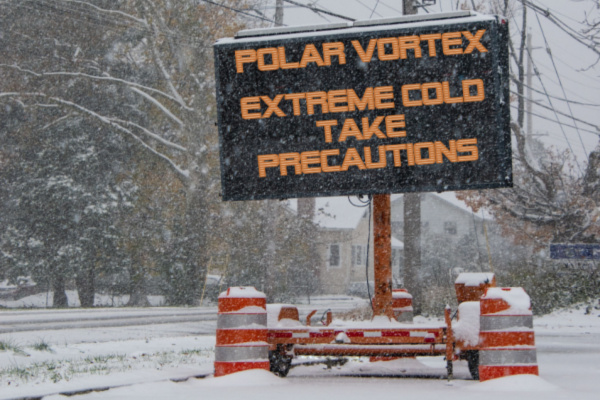During extreme cold events, you may hear a loud boom and feel like you have experienced an earthquake. However, as AccuWeather reports, this event was more likely a cryoseism, also known as an ice quake or a frost quake, and they’re nothing new. In fact, they were observed in the United States as early as 1818.
“Frost quakes happen when saturated ground rapidly freezes after a period of mild or above-freezing temperatures,” AccuWeather Senior Meteorologist Adam Douty explained. “Since water expands when it freezes, it can basically push apart dirt and rocks. If this expansion happens all at once, say a rock under pressure gives way and breaks, it can lead to the sound and earthquakelike sensation.”
Frost quakes are often mistaken for earthquakes because the initial indicators may appear similar. But, according to Douty, they have nothing to do with the movement of tectonic plates. “Within the U.S., they happen most often across the central and northern Plains into the Northeast, but any place that can have saturated ground and rapid freeze cycles could experience them,” Douty said.
For a frost quake to occur, there must be sufficient water present, and this water must be located deep within the ground. This happens most frequently in areas where there has been a great deal of precipitation in a relatively short period. The precipitation can be in the form of rain, sleet or a mixture of wet weather conditions that have saturated the ground saturated deep down. The severity of the cracking of the soil depends on the amount of water present.
When temperatures are at the freezing point, water deep underground can begin to freeze. When the temperature drops rapidly, within approximately 12 to 48 hours, water that has collected below the ground’s surface freezes solid and expands quickly. This change cracks the ground, including rock, around the solid ice formation.
An abundance of snow will prevent frost quakes from occurring. This is because snow acts as an insulator when it is deep enough. As little as 6 inches of snow is enough to keep the freezing air from affecting the ground when the temperature drops rapidly, thus preventing frost quakes. For these reasons, frost quakes occur only in areas where the conditions are just right.
After a relatively mild start to the year, which included above-freezing temperatures and mostly rain, parts of southern New England could be at risk of hearing a few loud booms as the polar vortex delivers some of the coldest air of the season. According to the Maine Geological Survey, frost quakes usually occur between midnight and dawn, which is the coldest part of the night. They can occur over several hours or even several days.
The Maine Geological Survey says the effects of frost quakes are typically “very localized” but sometimes can be enough to jar people awake from a deep sleep. The vibrations from frost quakes are occasionally strong enough to be measured and recorded on a seismometer, also known as a seismograph, which is a device used to measure ground movement during events like earthquakes and volcanic eruptions.
A few cases have been reported in the northeastern U.S. where people have been able to find a small crack in the ground where the cryoseism occurred. In these cases, it appears that the cracks are caused by the ground having contracted rapidly due to the sudden cold and split apart.
—
Photo Credit: Alan Budman / Shutterstock.com
